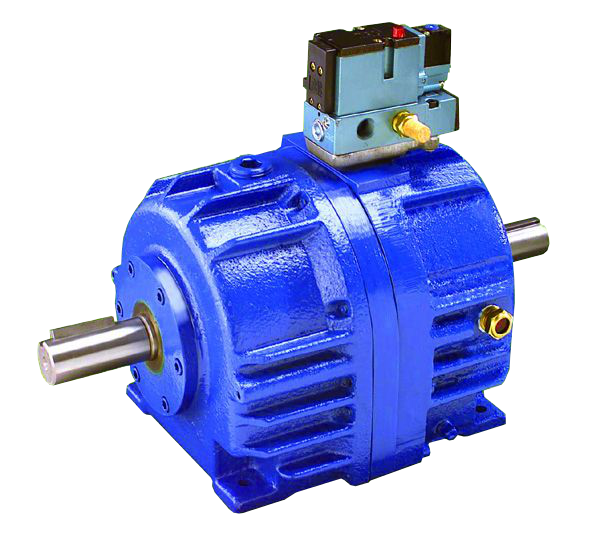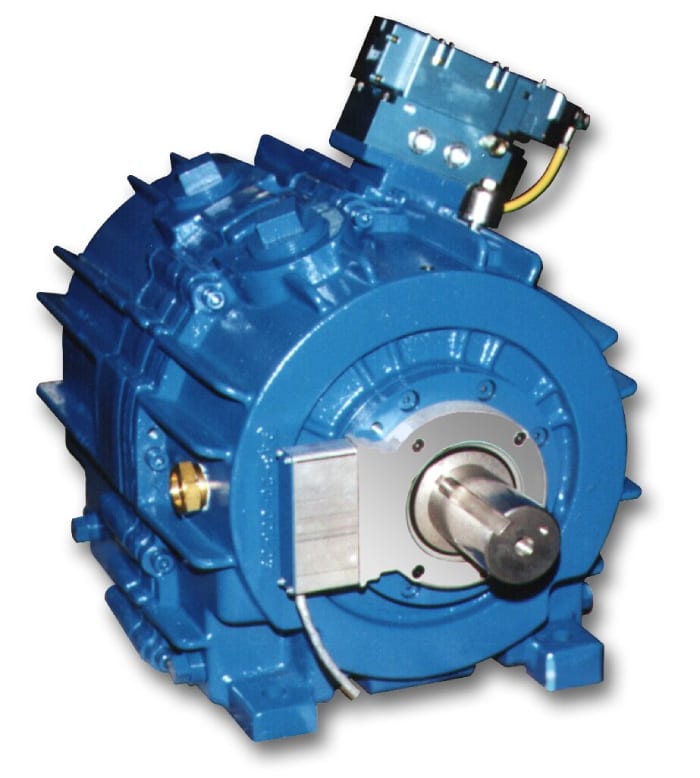Should You Select Pneumatic or Hydraulic Clutch or Brake Actuation
Force Control Oil Shear Products Offer a Choice of Hydraulic or Pneumatic Actuation
Posidyne Clutch Brakes, Posistop brakes and Positorq Brakes can be actuated by air pressure or hydraulic pressure. All Force Control clutches and brakes operate by pressurizing a piston to apply pressure to a friction stack. This friction stack can be connected as a clutch to drive a load, or as a brake to stop a load. The torque is controlled by the pressure exerted on the piston. This pressure can be applied either by compressed air or hydraulic means.
Typically the Posidyne Clutch Brakes and Posistop Brakes are actuated by air pressure. This is the simplest and most common for use within a plant where compressed air is available.
Hydraulic actuation is used where air is not available and remote locations such as outside conveyor loading system or sampling machine. Hydraulic pressure can be furnished through an existing hydraulic system used for other equipment or integrated onto the clutch brake or brake, or a free standing packaged designed for the unit.
If using a hydraulic system outside of the clutch brake pressure must be reduced. Pressure for other hydraulic systems is often 3000 to 5000 psi. The Posidyne clutch brakes or Posistop brakes typically operate at 80 PSI or less unless specifically designed for higher pressure hydraulic actuation.
Force control can furnish a clutch brake or brake with an integrally mounted hydraulic actuation system utilizing the internal transmission fluid. The system consists of a pump, motor, pressure regulator, solenoid valve and pressure gauge, all self contained with the unit.
This system is also great for hazardous duty applications as the Posidyne clutch brake or Posistop brake are inherently acceptable for hazardous duty. The motor and control valve would be upgraded for hazardous duty.
The Positorq brakes are also capable of air or hydraulic actuation. Positorq brakes operate differently than the Posidyne clutch brakes or Posistop brakes. These products typically are for start/stop and engage and lock up. The Positorq brakes typically do not lock up but transfer torque at a controlled level while slipping. This torque level may need to vary indefinitely, quickly, and precisely.
For simple systems such as tension brakes, or basic dynamometer load brakes, air actuation is acceptable. However Force Control has developed more sophisticated hydraulic actuation systems for dynamometer load brakes. Because of the need for more precise pressure control and quicker response by the testing community several versions of hydraulic actuation are available depending on the application. As the Positorq brakes are typically cooled using a recirculating forced lube cooling unit the actuation pumping system is part of that package.
For assistance selecting the correct actuation system for your application contact Force Control Industries, Inc. application engineers.



